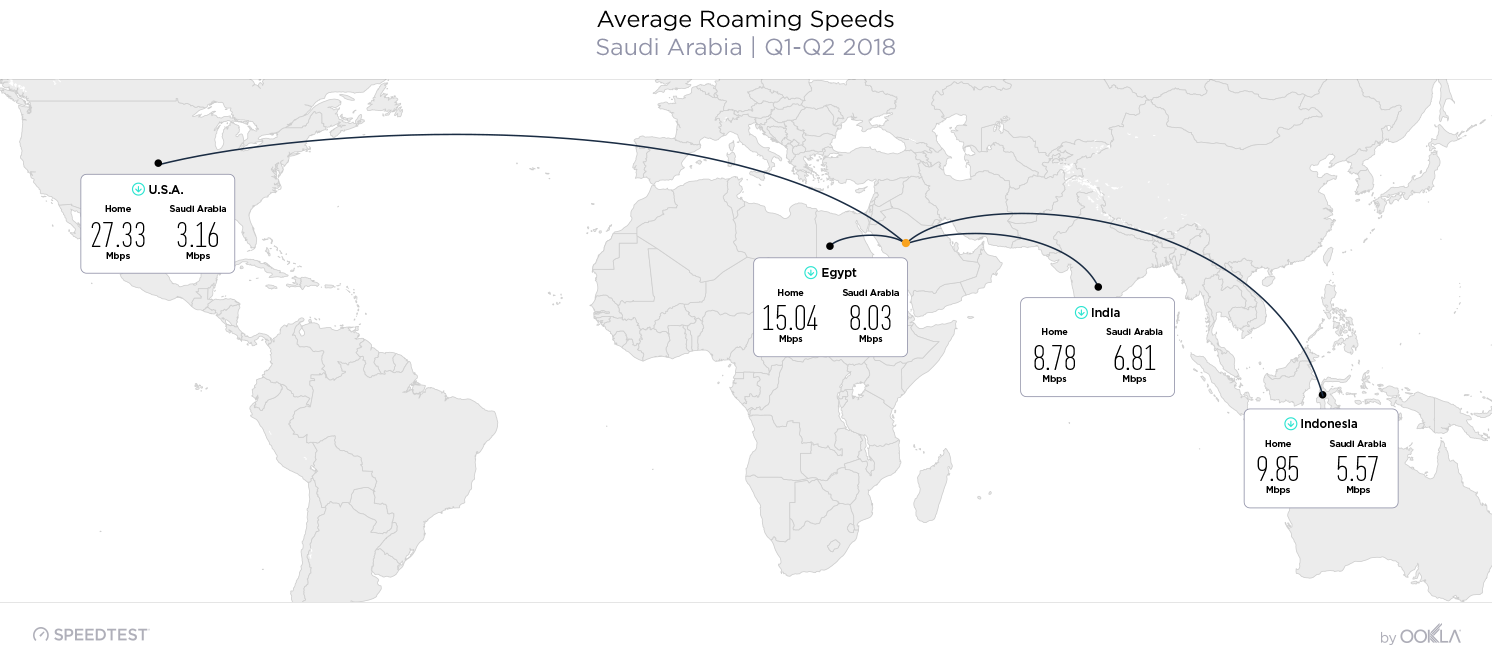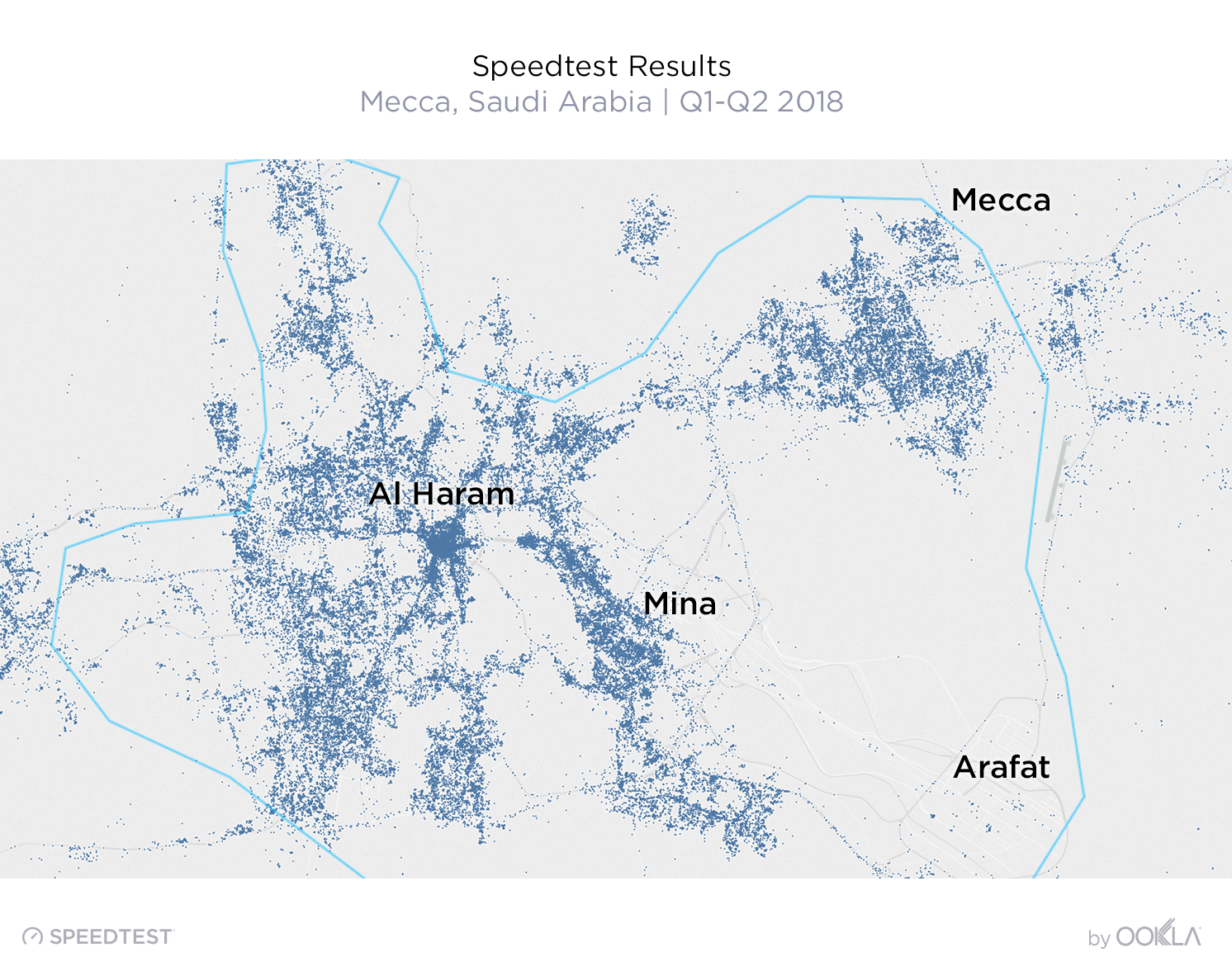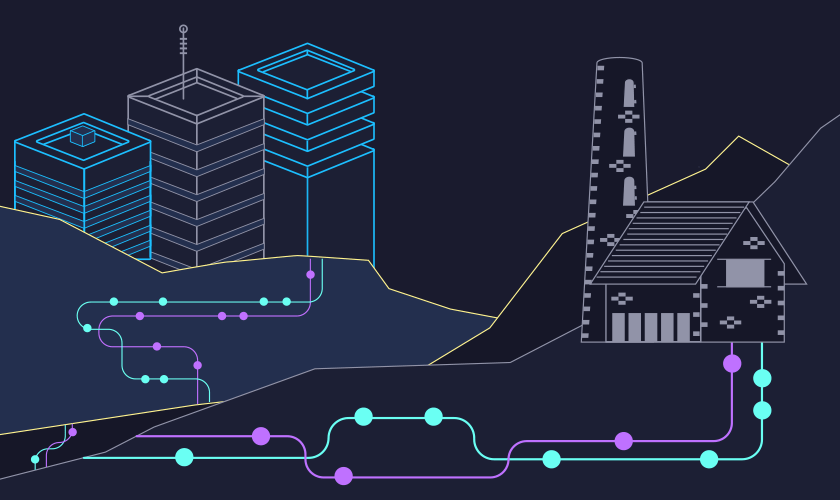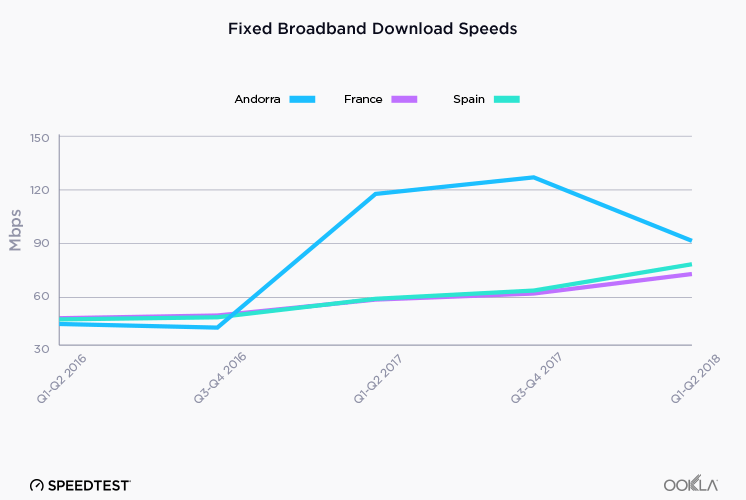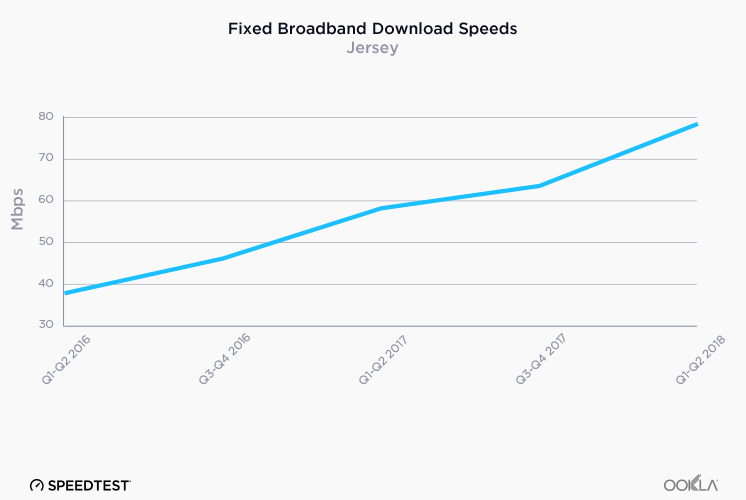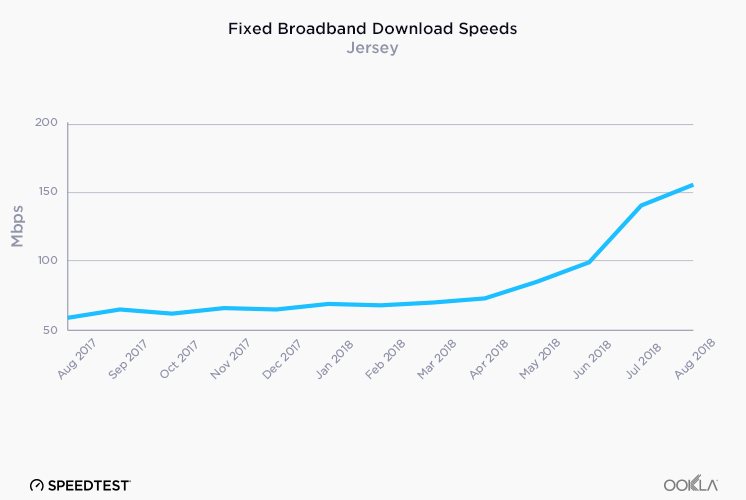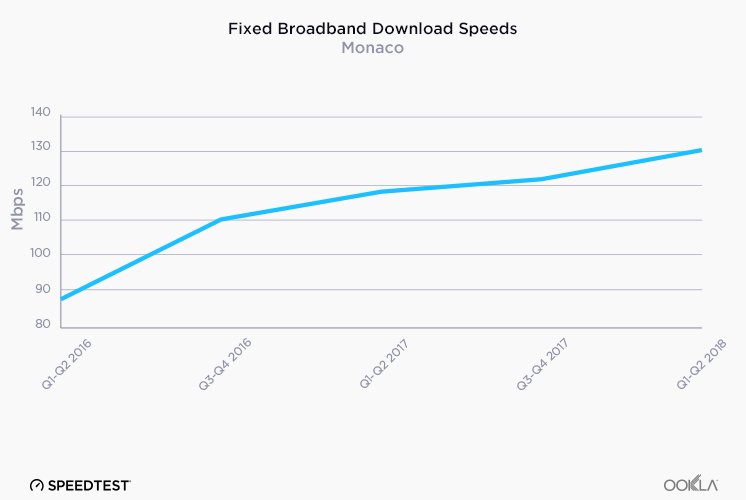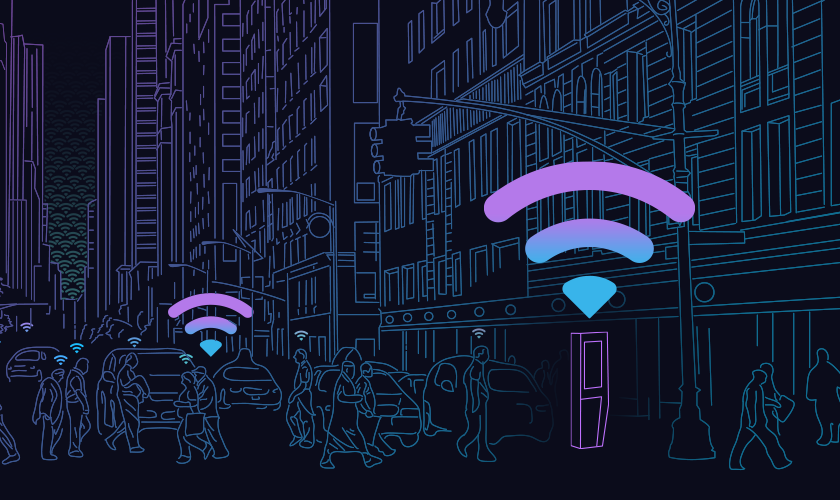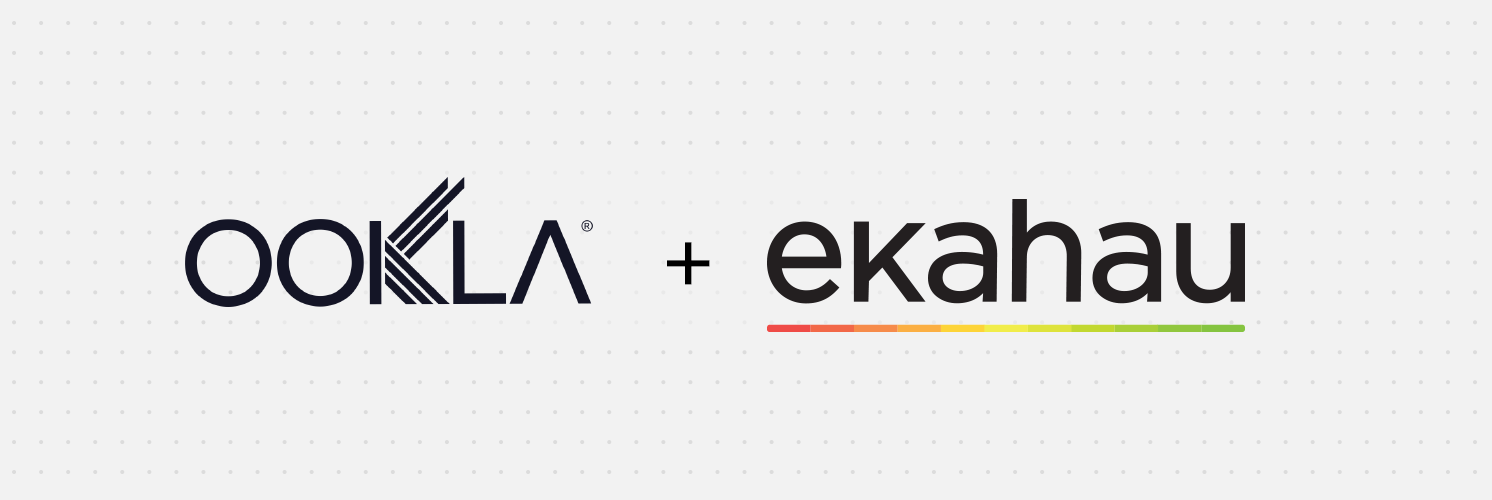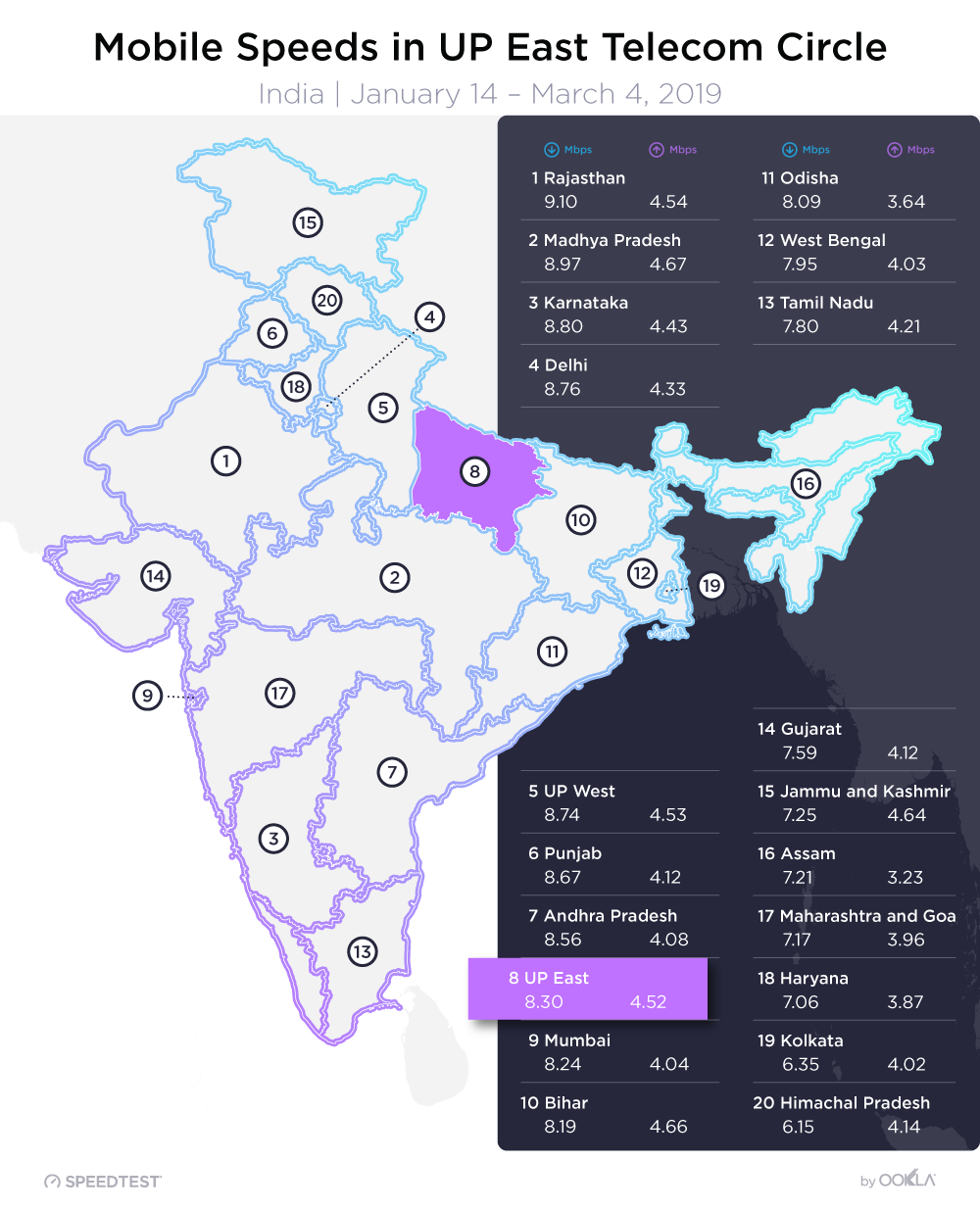

You may have read in Speedtest Global Index that the United Kingdom has the 41st fastest mobile download speed and the 25th fastest fixed broadband speed in the world for the month of August. This is true, but the U.K.’s complex geography makes the story much more nuanced than that. This month we’ve gone beyond the country-level statistics available in the Speedtest Global Index to give you a peek at the deeper story.
Mobile speeds are relatively even
Average mobile speeds across the four countries of the U.K. didn’t actually vary that much during the month of August 2017. Downloads in England are 2.5% faster than the UK as a whole. In Scotland, they are 10.5% slower than the UK average, 6.9% slower in Northern Ireland and 4.8% slower in Wales. But even in Scotland, the download speed is decent. Mobile upload speeds don’t fluctuate, either from England’s 1.7% faster than U.K. average to Wales 8.7% slower than U.K. average.
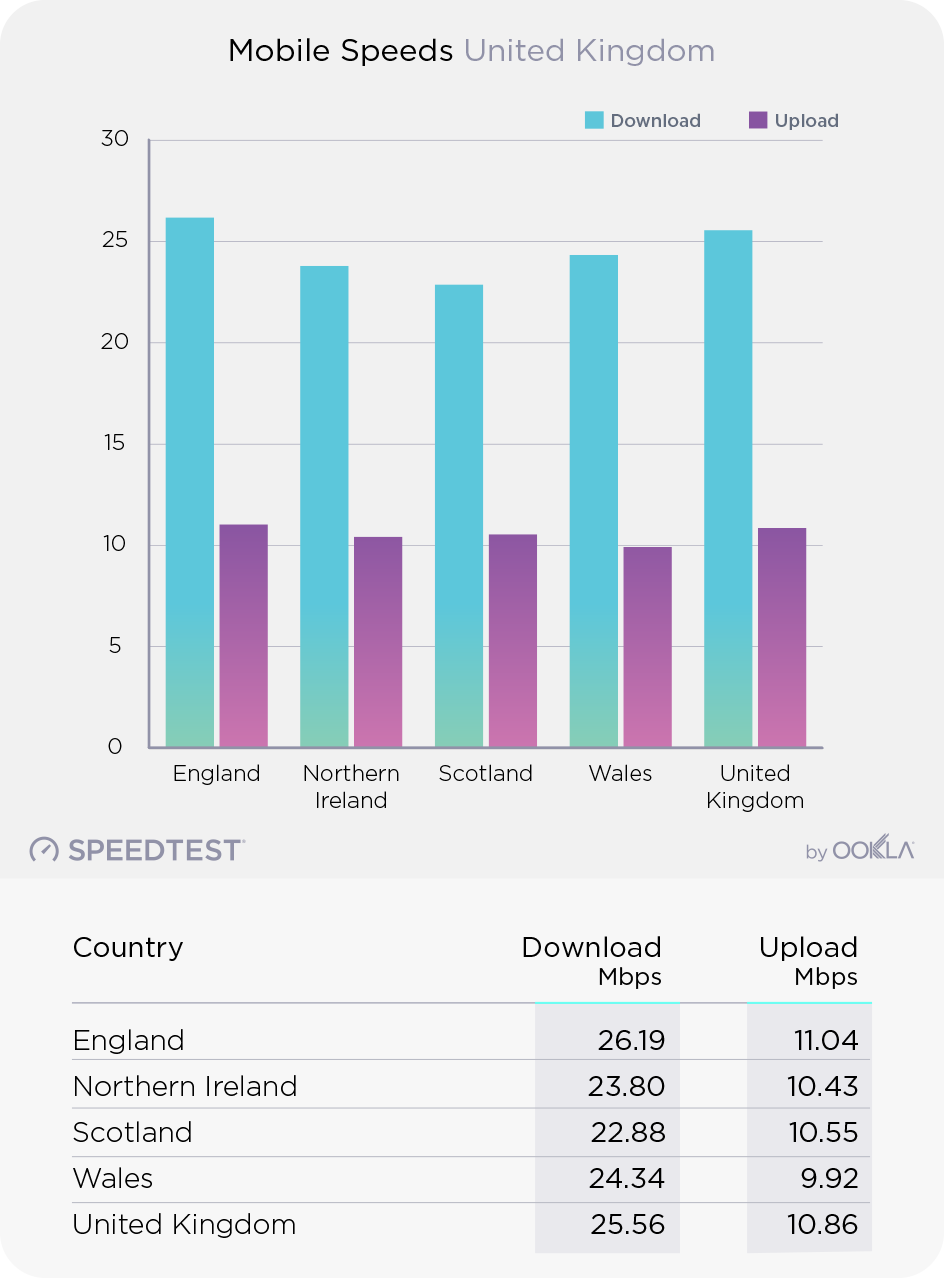
This does not mean that all mobile internet users in the U.K. connect at these speeds, even on a country-level. In June, Ofcom published a report saying that 56% of rural users in the U.K. were satisfied with their mobile service, compared with 72% of urban users.
Fixed broadband speeds vary… a lot
England’s mean download and upload speeds over fixed broadband are on par with those in the U.K. as a whole, but that’s where the story of relatively comparable internet speeds across the U.K. breaks down.
Scotland’s fixed broadband speed is a whopping 36.8% faster than the U.K. average. Download speeds in Wales and Northern Ireland, on the other hand, are 35.6% and 46.3% slower than the U.K. average. Northern Ireland’s average is slower than Ofcom’s 30 Mbps superfast designation and Wales’s average is not much better. Upload speeds in these two areas are 21.5% and 29.0% slower, respectively, than the U.K. average.
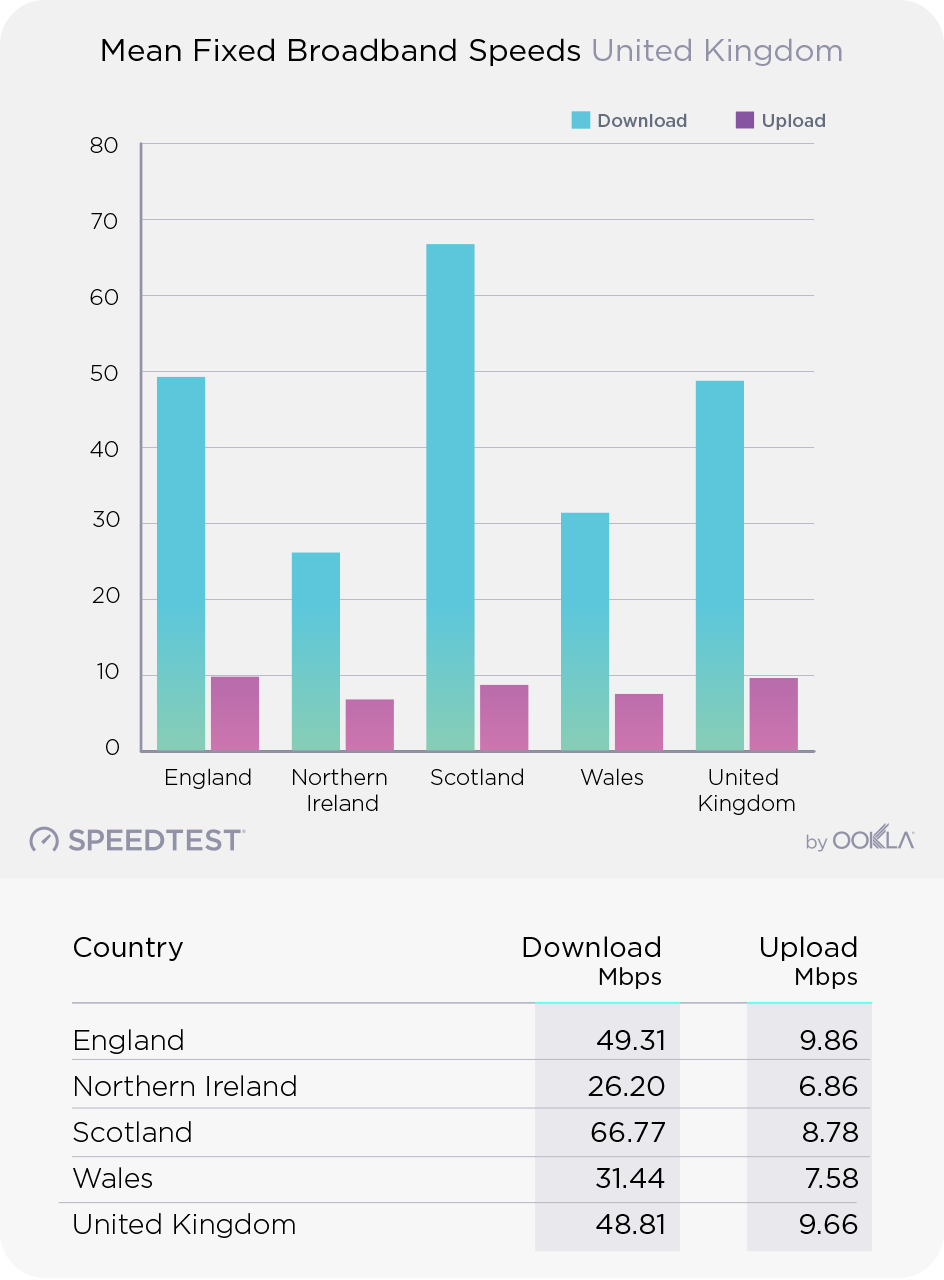
About those slow areas…
The government of Wales has been working on project Superfast Cymru to bring “access to high speed broadband to the majority of homes and businesses in Wales that cannot get it through the private sector’s own commercial programmes.” And the BBC reported in March 2017 that “Speeds of 24Mbps plus are now available in about nine out of every 10 homes and businesses in Wales.”
Northern Ireland has undertaken a similar endeavor with the Superfast Rollout Project and in December 2016, Ofcom’s Northern Ireland director wrote that superfast broadband was available to eight in 10 homes in Northern Ireland.
But these projects have been rolling out for awhile, and while nearly 650,000 Welsh premises newly had access courtesy of Superfast Cymru, download speeds in Wales only increased 12.8% over the last year. The Northern Ireland Broadband Improvement Project has been under way since February 2014 and the past year saw an increase of only 15.2% in download speeds. These compare with increases of 33.3% in England and 63.5% in Scotland during the same period.
So why are internet speeds still so different?
Subscription rates
Access does not mean that people are subscribing to higher tier plans. For example, the House of Commons library reported that seven out of ten of the slowest council wards in the U.K. were in Wales. This is borne out when we look at median speeds rather than mean speeds:
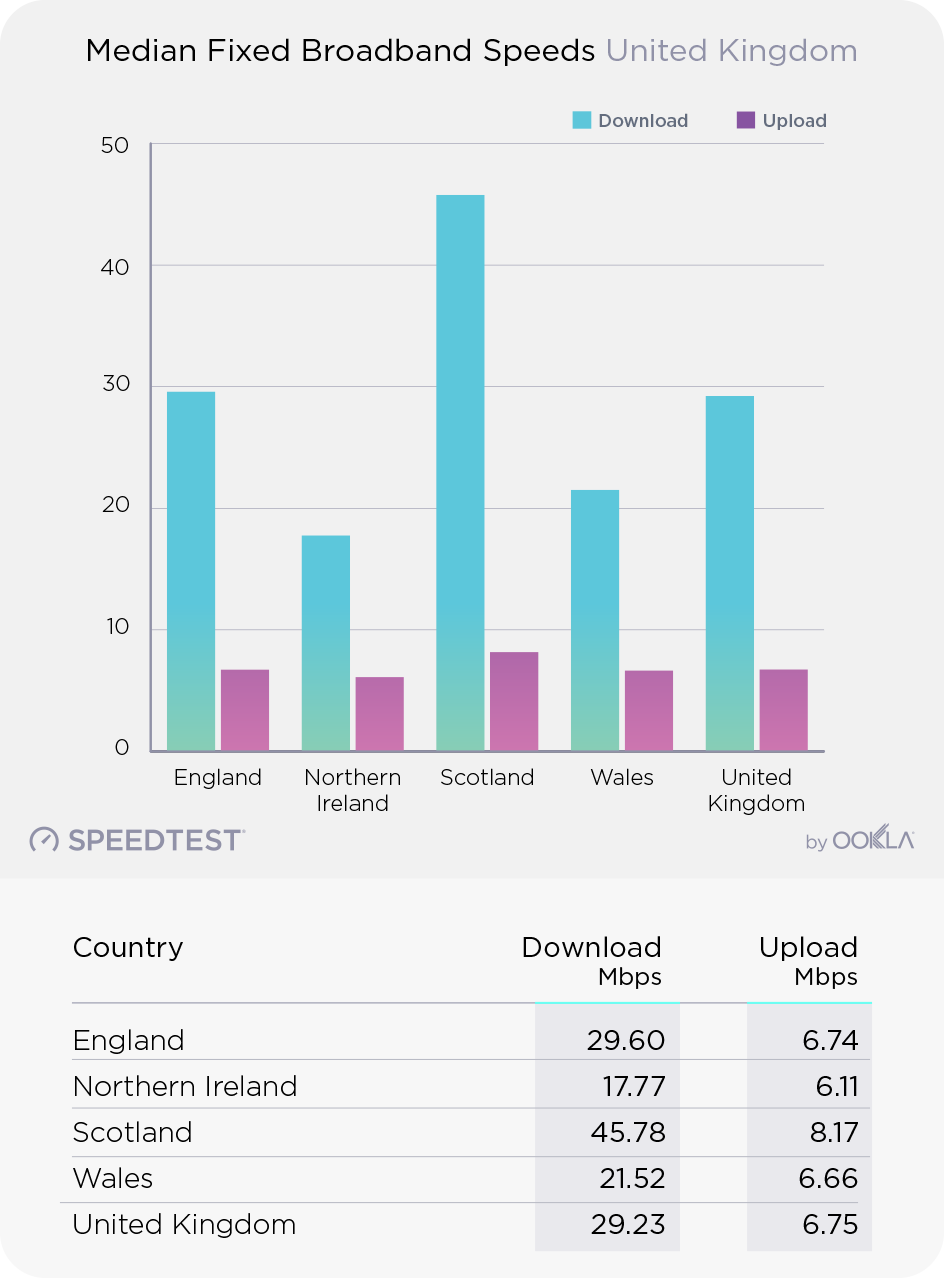
Because the median speeds are the most frequently occurring speeds, these numbers more accurately reflect what people are subscribing to, not what they could achieve in a given location.
Rural population
Extending fiber to rural areas can be expensive and not all providers are willing to invest in areas with smaller populations where the rate of return is likely to be lower.
Looking at rural population statistics from across the U.K., this could be one reason why service is slower in Northern Ireland and Wales. In Northern Ireland, 33.2% of people lived in areas with a population of 3,000 or less. Compare that with Scotland’s 18% or England where 17.6% of people lived in areas of 10,000 or less. In Wales that number is closer to 32%. Urban vs. rural designations in Wales are a bit more tricky, but the Government of Wales considers a combination of areas designated as “less sparse rural” and three subsets of “sparsest” areas to be rural; that combination of areas houses 20.5% of the Welsh population.
These numbers don’t necessarily mean that higher percentages of rural population leads to slower fixed broadband speeds, but there is a correlation.
Whatever the cause of the wide difference in fixed broadband speeds across countries of the U.K., it’s clear that Wales and Northern Ireland still have a lot of catching up to do, particularly if they want to take full advantage of the digital economy.
Ookla retains ownership of this article including all of the intellectual property rights, data, content graphs and analysis. This article may not be quoted, reproduced, distributed or published for any commercial purpose without prior consent. Members of the press and others using the findings in this article for non-commercial purposes are welcome to publicly share and link to report information with attribution to Ookla.








